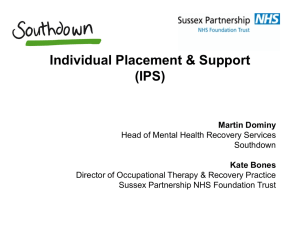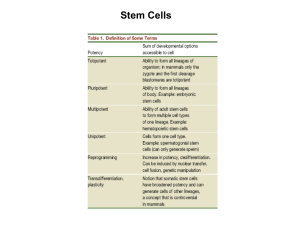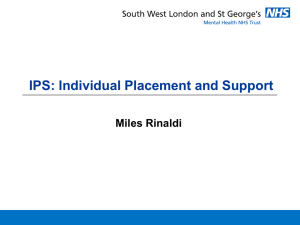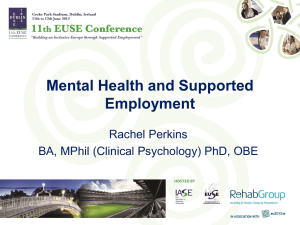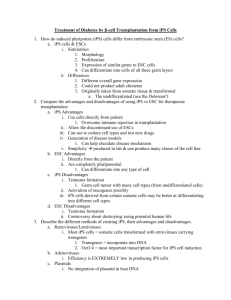Prater - CCO Oregon
advertisement
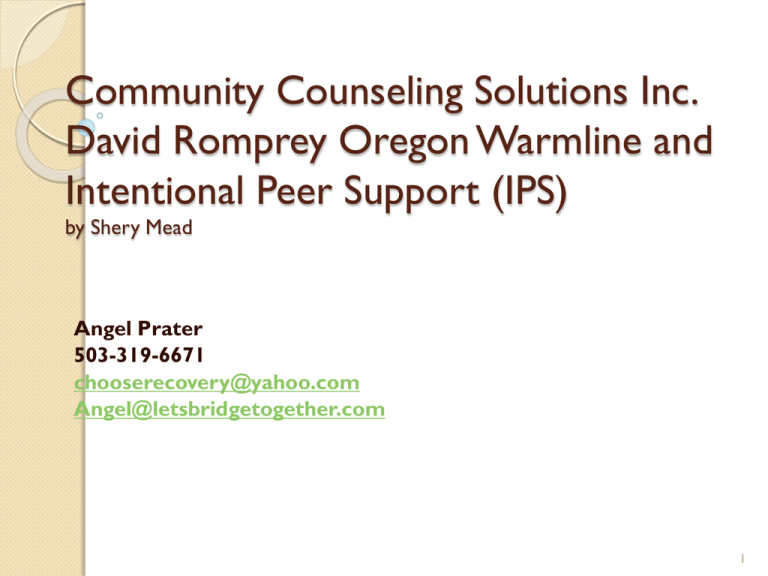
Community Counseling Solutions Inc. David Romprey Oregon Warmline and Intentional Peer Support (IPS) by Shery Mead Angel Prater 503-319-6671 chooserecovery@yahoo.com Angel@letsbridgetogether.com 1 Is all Peer Support the same? There are many different kinds of peer support and ways to practice peer support. Different ways of “doing” peer support bring about different outcomes. 2 Intentional Peer Support asks: What are we here to do? Not What are we here to stop? 3 What Is Intentional Peer Support? IPS is a purposeful way of being in relationship. It requires deep self-reflection (What’s my agenda? What’s my assumption/bias?) Curiosity and openness (How do you understand things? Honor other’s beliefs.) Expectation of learning from each other (We both have much to learn, rather than I’m here to help you.) 4 Intentional Peer Support is also… Purposefully focusing on Communication and Relationship. Support and Help go both ways in a mutual reciprocal relationship. Both individuals learn and grow. Each person is the ‘expert’ about themselves and together, in an IPS relationship, a new ‘story’ is created. 5 Traditional Crisis Response Crisis Stabilization = Moving Away from what you don’t want Crisis Respite = Resting Keeping people safe = Coercion Skills to cope = Dealing with & maintaining status quo. Problem Solving = Directing and advising 6 How can we change what we’re currently doing? Change our Fear Based conversations to conversations that are Hope Based Fear Based = Moving Away from what we don’t want. Hope Based = Moving Toward what we do want! 7 Fear-Based Response vs.. Hope- Based Response When we’re afraid we want to contain or control the situation. We want things to feel comfortable. When we respond out of fear we take power. Fear is sometimes generated by outside forces and stories (such as by our community). A hope-based response means that you and the other person see an opportunity to learn and grow. A hope-based response is contingent on both people’s needs 8 Learning Vs Help Assuming we are there to help assumes there is a problem (disconnect) Sometimes we “help” based on our own experience with help (worldview) Co-learning does not assume that either one is there to teach (mutuality) An emphasis on learning assumes growth (moving towards) 9 The 4 Tasks 1. Connection 2. Worldview 3. Mutuality 4. Moving Toward 10 Overview of IPS training Module 1 ◦ Working in challenging situations ◦ Self care ◦ Learning vs. helping ◦ The 4 tasks overview Module 2 ◦ Worldview ◦ Listening differently Module 5 ◦ Co-supervision ◦ Final projects Module 3 ◦ Trauma informed peer support ◦ Mutual responsibility Module 4 Module 6 (Oregon) ◦ Consumer/survivor/ex-patient Movement ◦ Charting Progress Notes ◦ Confidentiality & HIPAA ◦ Reporting Abuse & Neglect 11 Connection • Authenticity • Paying Attention • Honesty • Trust 12 Connection • A sense of belonging • We’re in it together • Builds trust which leads to learning for both people • Moves the focus away from the individual and into the relationship 13 13 Disconnects Ordering, directing Agreeing, approving, praising Cautioning Over relating Wanting to make a difference Interpreting or analyzing Arguing or lecturing Reassuring or sympathizing Telling people what they should do; moralizing Questioning or probing Being unaware of your power Withdrawing, joking or changing the subject Steering the conversation, or pushing your own agenda 14 WORLDVIEW Told Story: Icing What is said/seen= Truth 15 WORLDVIEW Untold Story: Cake Ingredients Contributors =Truth •Ethnicity •Birth-order •Religion •Culture etc. 16 Mutuality: Re-defining help Learning and growing together Moving away from a “service” type relationship It is only working if it is working for both of us 17 Doing Mutual Responsibility The relationship Shared Responsibility You Me 18 Moving Towards When we’re moving away from we’re focusing on problems When we’re moving towards, we’re creating what we want 19 Who is using IPS? Oregon-IPS is unique to other trainings in Oregon and has been trained in at least 28 Oregon counties for various positions. Many have adapted IPS as their leading training for Peers as well as many traditional service staff. For instance Clackamas County has trained many of their community members and clinical staff because it is known as a useful tool of communication in various areas of ones life (personal and professional). 20 People all over Oregon using IPS!! IPS 21 Who is using IPS? (Cont) To name a few of the areas IPS is used in PDS are: All employees of the David Romprey Oregon Warmline Deschutes County- Hospital emergency rooms, peers centers and Warmline GOBHI region in various areas of PDS including but not limited to Warmline Telecare Corporation all crisis program staff Drop in centers WVP Health Authority Clinical staff and Peer Providers All IRON TRIBE members Portland State University Students NAMI members Crisis respite centers Youth programs (youngest trained thus far in Oregon is 13 years old) Senior programs Veterans Programs Faith based community programs Homeless and low income programs Addictions treatment programs Correctional programs And more… 22 Uses of IPS outside of Oregon IPS is used in at least 20 + US states and is a leading National and International recognized training. It has been trained in China, New Zealand, Australia, Canada and Japan to name a few. It has been used to help the United Nations communicate and move towards what they want. This is a perfect demonstration of how universal it is. 23 Questions Angel Prater 503-319-6671 www.communitycounselingsolutions.org www.letsbridgetogether.org chooserecovery@yahoo.com 24
